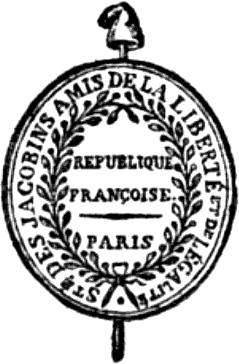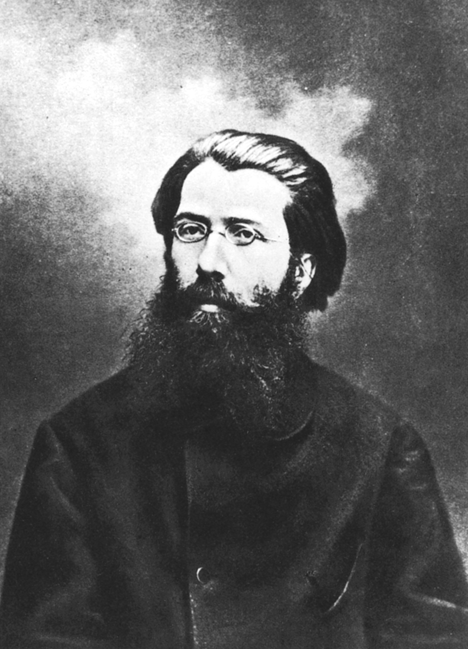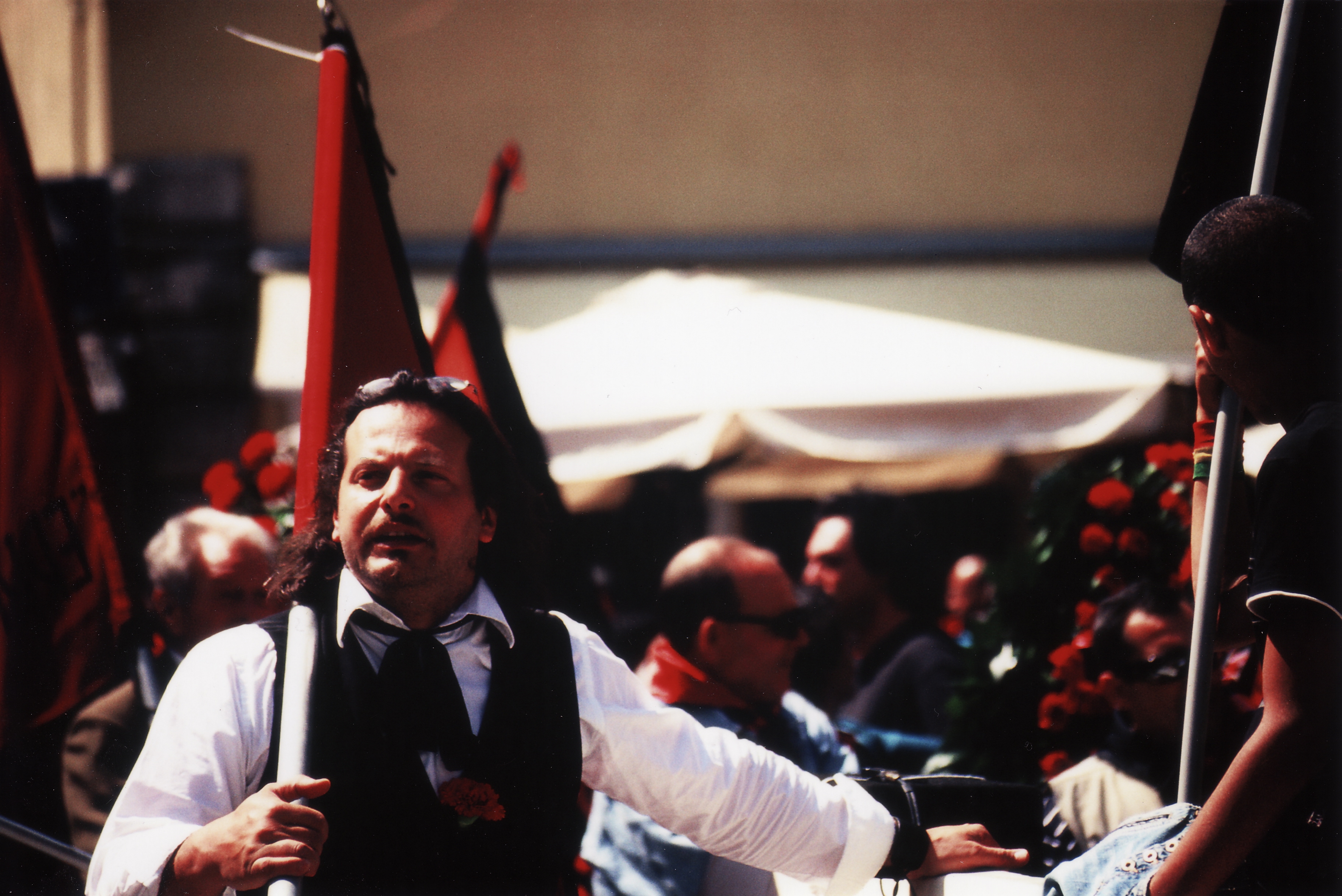|
13 November 1893 Stabbing
The 13 November 1893 stabbing was an attack carried out in Paris by the anarchist militant Léon Léauthier against Rista Georgevitch, a Serbian diplomat targeted because 'he looked bourgeois'. The attack, which took place in the middle of the Ère des attentats (1892–1894), was carried out by the anarchist in response to his dismissal from his job as a shoemaker and the misery in which he found himself. It was one of the first acts of indiscriminate terrorism in history, occurring only six days after the Liceu bombing and a few months before the Café Terminus bombing, making it a foundational event for modern terrorism. The victim ultimately survived his injuries, while Léauthier was sentenced to life imprisonment in a penal colony, where he was assassinated by the police in 1894. History Context In the 19th century, anarchism emerged and took shape in Europe before spreading. Anarchists advocated a struggle against all forms of domination perceived as unjust includi ... [...More Info...] [...Related Items...] OR: [Wikipedia] [Google] [Baidu] |
Ère Des Attentats
The (), or the French anarchist campaign of attacks from 1892 to 1894, was a period in the history of France and the broader Propaganda of the deed, history of propaganda of the deed (1880–1914), marked by a significant wave of political violence—both from the French authorities and Anarchism, anarchist terrorists. Its chronological boundaries extend from the Saint-Germain bombing (11 March 1892) to the Revolt of Saint-Joseph, massacre of the anarchist convicts (22 October 1894). During this period, the French press largely shaped political discourse and public opinion, presenting these acts as interconnected events forming a progressive logic rather than isolated incidents. In response to the significant repression anarchists had suffered in France since the Paris Commune (1871), a number of them came to consider terrorism as a legitimate means of avenging this repression, targeting symbols of power, state institutions, and emblematic places of bourgeois life. During the fi ... [...More Info...] [...Related Items...] OR: [Wikipedia] [Google] [Baidu] |
Capital Punishment
Capital punishment, also known as the death penalty and formerly called judicial homicide, is the state-sanctioned killing of a person as punishment for actual or supposed misconduct. The sentence (law), sentence ordering that an offender be punished in such a manner is called a death sentence, and the act of carrying out the sentence is an execution. A prisoner who has been sentenced to death and awaits execution is ''condemned'' and is commonly referred to as being "on death row". Etymologically, the term ''capital'' (, derived via the Latin ' from ', "head") refers to execution by Decapitation, beheading, but executions are carried out by List of methods of capital punishment, many methods, including hanging, Execution by shooting, shooting, lethal injection, stoning, Electric chair, electrocution, and Gas chamber, gassing. Crimes that are punishable by death are known as ''capital crimes'', ''capital offences'', or ''capital felonies'', and vary depending on the jurisdic ... [...More Info...] [...Related Items...] OR: [Wikipedia] [Google] [Baidu] |
Terrorist Incidents In The 1890s
Terrorism, in its broadest sense, is the use of violence against non-combatants to achieve political or ideological aims. The term is used in this regard primarily to refer to intentional violence during peacetime or in the context of war against non-combatants. There are various different definitions of terrorism, with no universal agreement about it. Different definitions of terrorism emphasize its randomness, its aim to instill fear, and its broader impact beyond its immediate victims. Modern terrorism, evolving from earlier iterations, employs various tactics to pursue political goals, often leveraging fear as a strategic tool to influence decision makers. By targeting densely populated public areas such as transportation hubs, airports, shopping centers, tourist attractions, and nightlife venues, terrorists aim to instill widespread insecurity, prompting policy changes through psychological manipulation and undermining confidence in security measures. The terms "terrori ... [...More Info...] [...Related Items...] OR: [Wikipedia] [Google] [Baidu] |
November 1893
November is the eleventh and penultimate month of the year in the Julian and Gregorian calendars. Its length is 30 days. November was the ninth month of the calendar of Romulus . November retained its name (from the Latin ''novem'' meaning "nine") when January and February were added to the Roman calendar. November is a month of late spring in the Southern Hemisphere and late autumn in the Northern Hemisphere. Therefore, November in the Southern Hemisphere is the seasonal equivalent of May in the Northern Hemisphere and vice versa. In Ancient Rome, Ludi Plebeii was held from November 4–17, Epulum Jovis was held on November 13 and Brumalia celebrations began on November 24. These dates do not correspond to the modern Gregorian calendar. November was referred to as Blōtmōnaþ by the Anglo-Saxons. Brumaire and Frimaire were the months on which November fell in the French Republican calendar. Astronomy November meteor showers include the Andromedids, which occurs from Se ... [...More Info...] [...Related Items...] OR: [Wikipedia] [Google] [Baidu] |
Propaganda Of The Deed
Propaganda of the deed, or propaganda by the deed, is a type of direct action intended to influence public opinion. The action itself is meant to serve as an example for others to follow, acting as a catalyst for social revolution. It is primarily associated with acts of violence perpetrated by proponents of insurrectionary anarchism in History of anarchism, the late 19th and early 20th century, including bombings and assassinations aimed at Statism, the state, the ruling class in a spirit of anti-capitalism, and church arsons targeting religious groups, even though propaganda of the deed also had nonviolent resistance, non-violent applications. These acts of terrorism were intended to ignite a "spirit of revolt" by demonstrating the state, the middle and upper classes, and religious organizations were not omnipotent as well as to provoke the State to become escalatingly repressive in its response. The 1881 London Social Revolutionary Congress gave the tactic its approval. Theore ... [...More Info...] [...Related Items...] OR: [Wikipedia] [Google] [Baidu] |
Anarchism In France
Anarchism in France can trace its roots to thinker Pierre-Joseph Proudhon, who grew up during the Restoration and was the first self-described anarchist. French anarchists fought in the Spanish Civil War as volunteers in the International Brigades. According to journalist Brian Doherty, "The number of people who subscribed to the anarchist movement's many publications was in the tens of thousands in France alone." History The origins of the modern anarchist movement lie in the events of the French Revolution, which the historian Thomas Carlyle characterized as the "open violent Rebellion, and Victory, of disimprisoned Anarchy against corrupt worn-out Authority". Immediately following the storming of the Bastille, the communes of France began to organize themselves into systems of local self-government, maintaining their independence from the State and organizing unity between communes through federalist principles. Direct democracy was implemented in the local districts of ... [...More Info...] [...Related Items...] OR: [Wikipedia] [Google] [Baidu] |
1890s In Paris
Year 189 ( CLXXXIX) was a common year starting on Wednesday of the Julian calendar. At the time, it was known as the Year of the Consulship of Silanus and Silanus (or, less frequently, year 942 ''Ab urbe condita''). The denomination 189 for this year has been used since the early medieval period, when the Anno Domini calendar era became the prevalent method in Europe for naming years. Events By place Roman Empire * Plague (possibly smallpox) kills as many as 2,000 people per day in Rome. Farmers are unable to harvest their crops, and food shortages bring riots in the city. China * Liu Bian succeeds Emperor Ling, as Chinese emperor of the Han dynasty. * Dong Zhuo has Liu Bian deposed, and installs Emperor Xian as emperor. * Two thousand eunuchs in the palace are slaughtered in a violent purge in Luoyang, the capital of Han. By topic Arts and sciences * Galen publishes his ''"Treatise on the various temperaments"'' (aka ''On the Elements According to Hippocrate ... [...More Info...] [...Related Items...] OR: [Wikipedia] [Google] [Baidu] |
1893 In France
Events from the year 1893 in France. Incumbents *President: Marie François Sadi Carnot *President of the Council of Ministers: ** until 4 April: Alexandre Ribot ** 4 April-3 December: Charles Dupuy ** starting 3 December: Jean Casimir-Perier Events * 10 March – Côte d'Ivoire becomes a French colony. * 16–17 August – Massacre of Italians at Aigues-Mortes: Italian workers of the ''Compagnie des Salins du Midi'' are attacked in Aigues-Mortes (France) by French villagers and workers with at least 8 deaths. Anti-French riots erupt in Italy. In Rome the windows of the French Embassy are smashed and for a while the angry mob seems to get out of hand. * 20 August – Legislative election held. * 3 September – Legislative election held. * 10 October – First vehicle registration plates in the Seine (department), under terms of a Paris Police Ordinance of 14 August. Births January to June * 3 February – Gaston Julia, mathematician (died 1978). * 5 February – Arsène Ro ... [...More Info...] [...Related Items...] OR: [Wikipedia] [Google] [Baidu] |
Avenue De L'Opéra
The Avenue de l'Opéra () was created from 1864 to 1879 as part of Haussmann's renovation of Paris. It is situated in the center of the city, running northwest from the Louvre to the Palais Garnier, the primary opera house of Paris (until the opening of the Opéra Bastille in 1989). Description The Avenue de l'Opéra was an important thoroughfare in Haussmann's traffic scheme, since it linked the Rue de Rivoli at the Louvre to the ''grands boulevards'' near the Opéra and gave better access to the wealthy neighbourhoods being developed at that time in northwest Paris. It had the additional advantage that the demolition required for its construction cleared the area between the Louvre and the grand boulevards, which had been occupied by a slum district, dense with poor-quality housing and numerous narrow streets, that was considered unhealthy and dangerous.Ayers 2004, p. 176. At the avenue's northwest end, in front of the opera house, is the Place de l'Opéra. Besides providing a ... [...More Info...] [...Related Items...] OR: [Wikipedia] [Google] [Baidu] |
Ravachol
François Claudius Ravachol (; born Koenigstein; 14 October 1859 – 11 July 1892) was a French illegalist anarchist mainly known for his terrorist activism, impact, the myths developed around his figure and his influence on the anarchist movement in France. Born in 1859 in Saint-Chamond, in the Saint-Étienne area, Ravachol grew up in poverty and domestic violence. Later, he began a life of crime marked by the murder and robbery of a rich hermit. In this city, Ravachol gradually adopted anarchist ideas and met other activists, such as Rosalie Soubère and Joseph Jas-Béala. He managed to escape from arrest and with these two accomplices, the militant moved to Paris in 1891. There, joined by the young anarchist militant Charles Simon, they carried out the Saint-Germain and Clichy bombings (1892), targeting the judge and prosecutor responsible for the judicial persecution of anarchists arrested during the Clichy Affair (1891). Quickly arrested after the second attack, he s ... [...More Info...] [...Related Items...] OR: [Wikipedia] [Google] [Baidu] |
Sébastien Faure
Sébastien Faure (; 6 January 1858 – 14 July 1942) was a French anarchist, convicted sex offender, freethought and secularist activist and a principal proponent of synthesis anarchism. Biography Before becoming a free-thinker, Faure was a seminarist. He engaged in politics as a socialist before turning to anarchism in 1888. In 1894, he was prosecuted in "The Trial of the thirty" ("Procès des trente"), but was acquitted. That same year, he became the guardian of Sidonie Vaillant after the execution of her father, Auguste Vaillant. In 1895, he cofounded ''"Le Libertaire"'' with Louise Michel, taking the name of the earlier journal by Joseph Déjacque. At the time of the Dreyfus affair, he was one of the leading supporters of Alfred Dreyfus. In 1904, he created a libertarian school, '' La Ruche'' ("The Hive"), close to Rambouillet, which closed in February 1917. In 1916, he launched the periodical ''"Ce qu'il faut dire"''. Faure also co-founded (with Volin) the ... [...More Info...] [...Related Items...] OR: [Wikipedia] [Google] [Baidu] |










